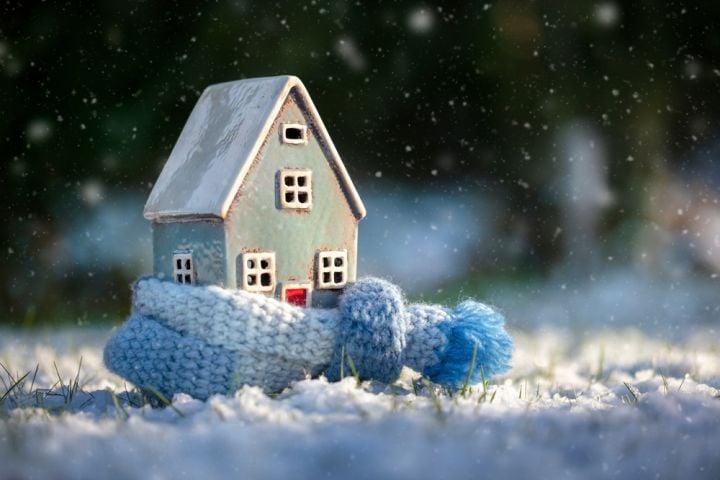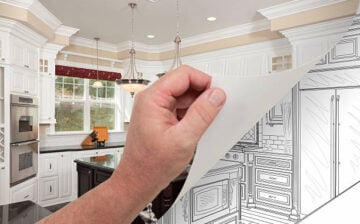
The holiday ‘bomb cyclone’ that hit the American northeast was perhaps a taste of the climatic extremes to come soon. Meteorologists called it a ‘once-in-a-generation storm,’ subjecting the region to heavy snowfall, nearly 80 mph winds, and 50-below-zero temperatures. This weather anomaly left almost 60 dead and millions without power as of last month.
New York wasn’t spared, as Governor Kathy Hochul declared a state of emergency across the entire state ahead of Christmas Day. The experience may prompt some residents to pack their things and move to somewhere that snows far less—maybe California. The problem is that the bomb cyclone has also wreaked havoc there.
Considering extreme weather can reach you no matter where you live, options may seem limited. In this case, your best bet may be to hunker down in a home designed to withstand the worst that Mother Nature can throw at it. Here’s an in-depth look into building one.
Prepping For Every Extreme
If anything, California’s bomb cyclone proves that not only every place in the US is prone to climate extremes, but it’ll also change the local climate drastically. Snow in Florida? It already happened, though it was more like sleet. Heatwaves near the Arctic? It’s ongoing in Europe.
A United Nations Environment Programme (UNEP) report in 2021 stressed the need to build homes around worsening climate conditions. Below are some highlights.
- Extreme heat will be inevitable for 1.6 billion people in 970 cities globally by 2050.
- Rising sea levels will affect over 400 million people living in coastal areas by 2025.
- Droughts will become more frequent, increasing the risk of flooding amid heavy rain.
- Rising ocean temperatures translate to more powerful and frequent tropical cyclones.
At this point, it’s impossible to be sure that you won’t get hit by a specific climate extreme just because it never or rarely happened one or two decades ago. Future harsh climate home designs must consider every possible climate extreme no matter where people live or choose to live.
Proof Of Concept
To better understand what goes into climate-resistant home designs, it pays to look at examples over the years. Fortunately, in this case, there isn’t any need to look too far back.
Babcock Ranch, an inland community of some 100 homes in peninsular Florida, was the subject of several news reports after it survived the wrath of Hurricane Ian surprisingly intact. Whereas the surrounding community suffered extensive damage from this Category-4 hurricane, Babcock Ranch only had a few displaced signposts and fallen palm trees.
Power wasn’t a problem, as the neighborhood gets its power from an 870-acre solar power farm and its lines run underground. It’s also surrounded by retaining ponds, significantly reducing the risk of flooding. Then again, it’s worth considering that the community didn’t experience the full brunt of Ian, as it had already begun weakening by the time it made landfall.
While much of Babcock Ranch’s survivability was attributed to effective urban planning, some of its residents vouched for not losing a shingle as the hurricane cut a destructive swathe across the state. In short, any house built right will be built to last—or at least be cheaper to fix.
The Right Way
But what is a house that’s built right? And how do you go about it?
A quick online search of climate-resilient home designs will generate countless examples using different materials. It’s easy to think wood might not hold up against a hurricane, but then you have a wooden house in Okinawa, Japan, built to resist typhoons (which can be stronger than hurricanes). The same can be said for putting together a home with nails or welds, but a project in Italy proves that you can have one with 3D-printed clay.
One crucial caveat that design experts can agree upon is that focusing on one climate extreme in home design is an excellent way to make it less effective against another extreme. The right way is the smart way, making sound decisions on every facet of home design.
For example, a complex roof design may be able to handle intense rainfall but prone to embers carried by the wind from a nearby bushfire. It pays to strike a delicate balance—in this case, a more straightforward design that’ll still hold its own under torrential rain but won’t trap embers.
Smart home designs also consider the environmental impact of manufacturing enough building materials to realize them. According to another UNEP report, the construction sector generates an estimated 38% of the world’s energy-related emissions. Damaged or destroyed homes from climate extremes create demand for more materials, leading to more emissions.
Because of this, the term ‘zero-carbon home’ has become a buzzword in the construction sector for the past several years. The idea is to offset emissions generated by the production of building materials by making the best possible decisions. Simply put, if a home design can do more with less, it’s a win-win for the homeowner and Mother Nature.
Clay Nesler, CEO of environmental consultancy firm The Nesler Group, said that zero-carbon designs for homes and communities are achievable by considering four major trends, namely:
- Reducing carbon emissions in the power grid (decarbonization)
- Replacing gas boilers with electric-based ones (electrification)
- Lowering the amount of energy lost to design flaws (efficiency)
- Installing digital technologies like smart thermostats (digitalization)
These ‘good DEEDs,’ as Nesler calls them, are already in practice with various building projects and have defined the long-term goals for multiple advocacies worldwide. It is possible to achieve 100% zero carbon, though it won’t be easy.
Final Thoughts
Whether or not due to a climate extreme, moving to another place requires plenty of prep work. Unless you already have an apartment or condominium unit to move into, your new home must adapt to the environment just like your body. Know that the environment can be anything aside from the usual, due in no small part to climate change.
As cyclones, fires, and floods grow more intense and occur more often, future homes must be built to weather them (no pun intended). The choice of building materials matter, but deciding how much the design needs and how they’ll be used matter just as much, if not more. As for how it’ll actually hold in the next bomb cyclone or climate extreme, only time can tell.
We hope you found this blog post on Home Design 101: How To Build A Home That Can Withstand Extreme Climates, useful. Be sure to check out our post on 5 Things to Expect if You Want to Build Your Own Home for more great tips!
Have Experience in the Moving Industry? Want an Additional Income Stream? Work With All Around Moving!
Partner with us and we’ll help you make money by establishing your own moving consultant business. Click here to learn more.





